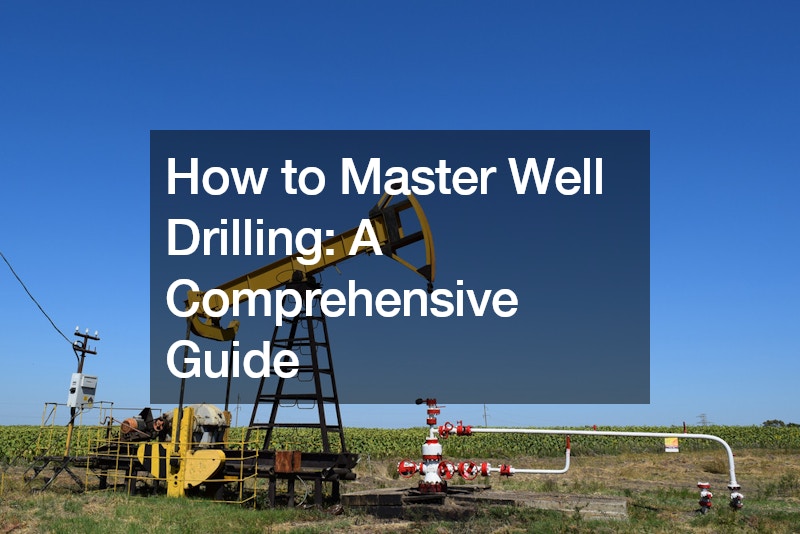
Title: How to Master Well Drilling: A Comprehensive Guide
Well drilling is a vital skill for both professionals and homeowners alike. Whether you’re seeking to install a water well for residential use, agricultural purposes, or industrial applications, mastering the art of well drilling is essential. This comprehensive guide will take you through the step-by-step process of understanding, planning, and executing successful well-drilling projects.
Understanding Well Drilling
Before diving into the drilling process, it’s crucial to understand the fundamentals of well drilling. A water well is essentially a hole drilled into the ground to access underground water sources known as aquifers. These aquifers contain water that can be extracted and utilized for various purposes, including drinking water, irrigation, and industrial needs.
Selecting the Right Location
The first step in mastering well drilling is selecting the optimal location for your well. This involves conducting thorough research, including geological surveys and hydrological assessments, to identify suitable aquifer formations beneath the surface. Factors such as soil composition, depth to groundwater, and local regulations must be taken into account when choosing the drilling site.
Choosing the Drilling Method
Once you’ve identified the location, it’s time to select the appropriate drilling method. Several techniques are available, including rotary drilling, cable tool drilling, and percussion drilling. Each method has its advantages and limitations, depending on factors such as soil type, depth of the aquifer, and budget constraints. Consulting with experienced drilling professionals can help you determine the best approach for your specific project.
Executing the Drilling Process
With the location and drilling method decided, it’s time to begin the drilling process. This typically involves mobilizing drilling equipment to the site, such as drilling rigs, casing pipes, and drilling bits. The drilling rig penetrates the earth’s surface and creates a borehole to access the aquifer below. As the drilling progresses, casing pipes are installed to prevent the collapse of the borehole and ensure the integrity of the well.
Ensuring Proper Maintenance
Once the well drilling process is complete, proper maintenance is essential to ensure the longevity and efficiency of the well. Regular inspections, water quality testing, and preventive maintenance measures should be undertaken to identify and address any issues promptly. Well, rehabilitation techniques may also be employed to optimize well performance and address issues such as declining water yield or contamination.
Understanding Groundwater Dynamics
Before delving into the intricacies of well drilling, it’s crucial to grasp the fundamentals of groundwater dynamics. Groundwater constitutes a significant portion of the Earth’s freshwater resources and is vital in sustaining ecosystems and human activities. Familiarize yourself with hydrogeological concepts such as aquifers, hydraulic conductivity, and groundwater flow patterns. Research the geological characteristics of your target drilling location to anticipate potential challenges and optimize well placement.
Choosing the Right Equipment
Selecting the appropriate drilling equipment is paramount to the success of your well drilling endeavor. Evaluate factors such as drilling depth, geological formations, and budget constraints to determine the most suitable equipment for your project. Common options include rotary drilling rigs, cable tool rigs, and hydraulic percussion drills. Additionally, consider investing in specialized tools such as casing advanced systems and down-the-hole hammers to enhance drilling efficiency and accuracy.
Executing the Drilling Process
Once you’ve assembled the necessary equipment, it’s time to begin drilling. Identify the optimal drilling site based on geological surveys and hydrogeological assessments. Clear the area of any obstructions and secure the drilling rig in position. Follow established safety protocols and operating procedures to minimize risks and ensure the well-being of personnel.
Implementing Environmental Best Practices
Well drilling operations have the potential to impact the surrounding environment, including groundwater quality and ecosystem integrity. Incorporate environmental best practices into your drilling activities to mitigate adverse effects and promote sustainable resource management. Employ environmentally friendly drilling fluids, such as biodegradable polymers or air-based drilling systems, to minimize contamination risks and reduce ecological footprints.
Exploring Alternative Drilling Techniques
Innovations in well drilling technology continue to expand the range of options available to practitioners. Explore alternative drilling techniques, such as directional drilling, horizontal drilling, and slim-hole drilling, to overcome site-specific challenges and optimize resource recovery. Collaborate with industry experts and research institutions to stay abreast of emerging trends and breakthroughs in well drilling methodologies.
Conclusion
Mastering the art of well drilling requires a combination of theoretical knowledge, practical skills, and strategic planning. By understanding groundwater dynamics, choosing the right equipment, executing the drilling process with precision, implementing environmental best practices, and exploring alternative techniques, you can enhance the success and sustainability of your well-drilling endeavors. Embrace continuous learning and innovation to stay ahead in this dynamic field and contribute to the responsible management of Earth’s precious water resources.
